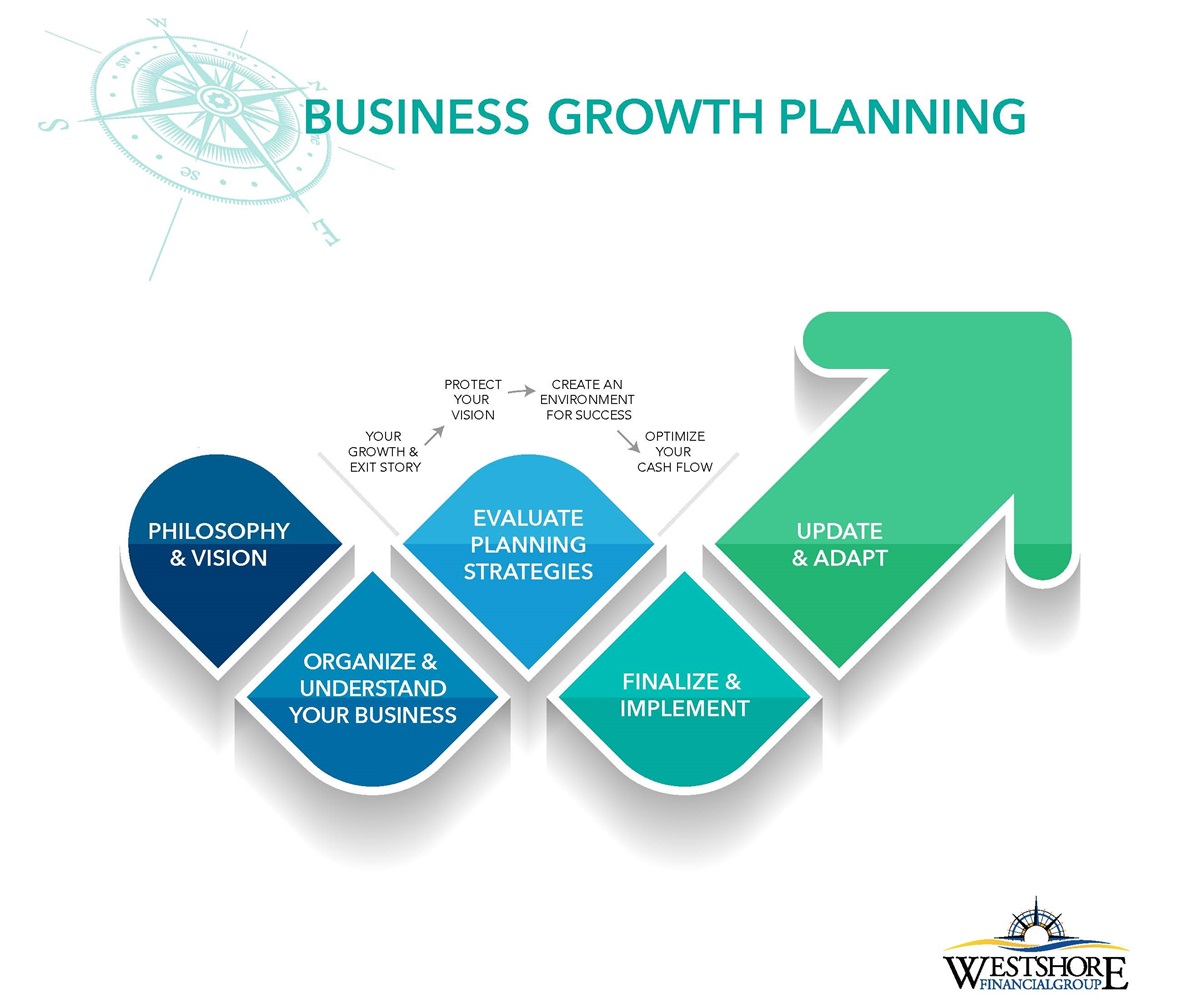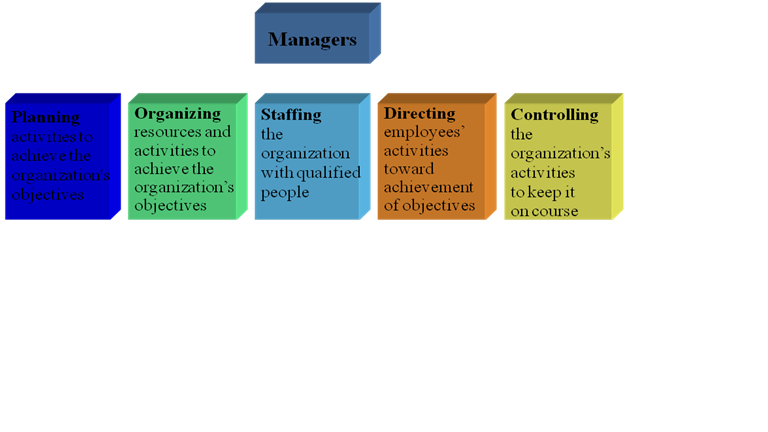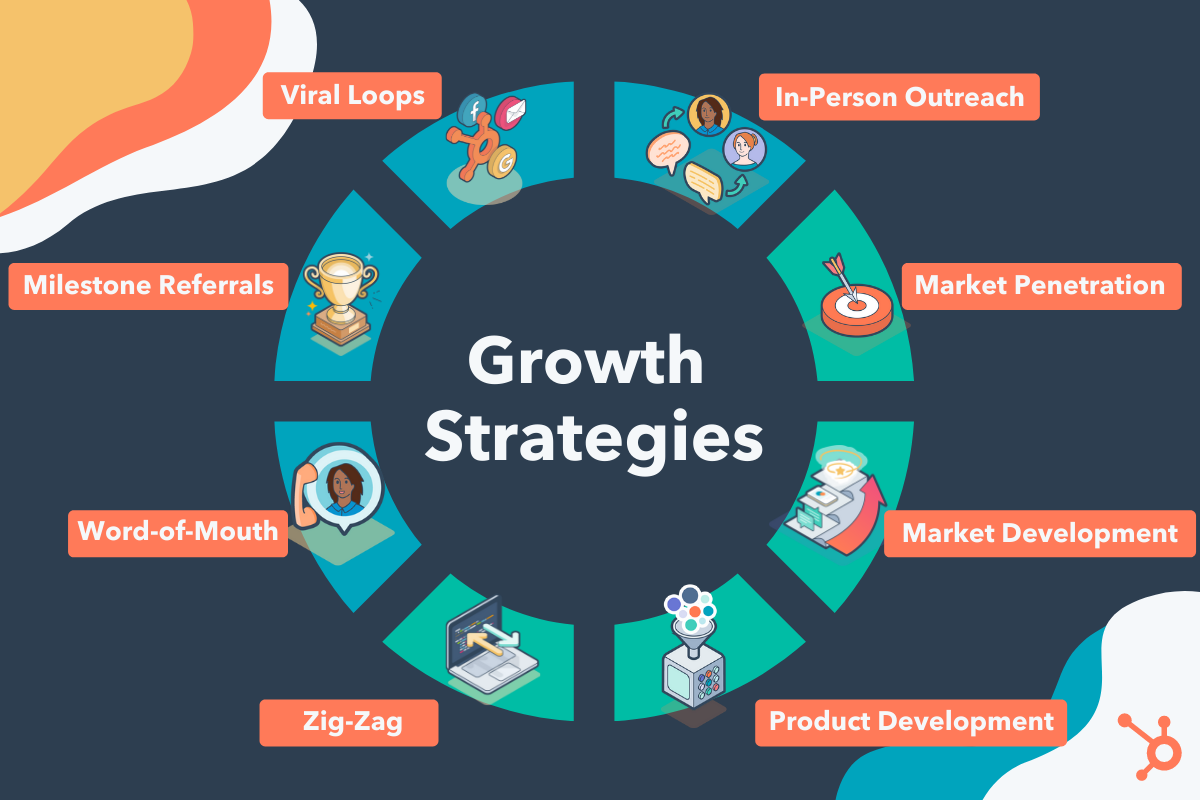Cross-functional growth planning transcends traditional siloed approaches, fostering collaboration across departments to unlock untapped potential. This holistic strategy leverages diverse expertise and perspectives, resulting in more innovative and effective growth initiatives. By aligning departmental goals and resources, organizations can achieve synergistic outcomes that exceed the sum of their individual parts, ultimately driving significant and sustainable business expansion.
This comprehensive guide explores the key principles of cross-functional growth planning, from identifying growth opportunities and allocating resources to implementing strategies and measuring results. We will delve into practical methodologies, illustrative examples, and potential challenges, providing a roadmap for organizations seeking to cultivate a culture of collaboration and achieve ambitious growth targets.
Defining Cross-Functional Growth Planning

Cross-functional growth planning represents a strategic approach where different departments within an organization collaborate to achieve shared growth objectives. Unlike siloed strategies, this collaborative model leverages the diverse expertise and perspectives of various teams, resulting in more innovative, comprehensive, and effective growth initiatives. This holistic view fosters a more unified and efficient process, leading to improved outcomes.
Cross-functional growth planning centers on several core principles. Firstly, it emphasizes collaboration and communication across departments, breaking down traditional barriers and fostering a shared understanding of goals and strategies. Secondly, it promotes data-driven decision-making, using insights from various functional areas to inform strategic choices. Thirdly, it prioritizes agility and adaptability, allowing the plan to evolve in response to market changes and internal feedback. Finally, it fosters accountability, ensuring that each team understands its role and contributions to the overall growth strategy.
Key Differences Between Cross-Functional and Siloed Growth Strategies
Siloed growth strategies, in contrast, operate within isolated departmental functions. Marketing might pursue one strategy, sales another, and product development a third, often without coordination or shared goals. This leads to inefficiencies, duplicated efforts, and missed opportunities for synergy. Cross-functional planning, on the other hand, integrates these functions, creating a unified, cohesive approach. This integration allows for a more holistic understanding of the customer journey, improved resource allocation, and a more effective response to market demands. The result is a more robust and adaptable growth strategy capable of achieving significantly better results.
Examples of Successful Cross-Functional Growth Planning
The successful implementation of cross-functional growth planning can be observed across various industries. The following table highlights some notable examples:
| Company Name | Industry | Strategy | Results |
|---|---|---|---|
| Amazon | E-commerce | Integrated marketing, logistics, and product development to optimize the customer experience and expand into new markets. | Dominant market share, significant revenue growth, and global expansion. |
| Netflix | Streaming Entertainment | Combined data analytics, content creation, and user experience design to personalize recommendations and improve customer retention. | Massive subscriber growth, expansion into original content production, and global market leadership. |
| Spotify | Music Streaming | Integrated marketing campaigns, data-driven playlist curation, and partnerships with artists to build a large and engaged user base. | Significant market share in the music streaming industry and diverse revenue streams. |
| Apple | Technology | Close collaboration between hardware, software, and marketing teams to create a seamless and integrated user ecosystem. | High brand loyalty, premium pricing, and consistently high profitability. |
Identifying Growth Opportunities

Uncovering untapped potential within your organization requires a systematic approach that transcends departmental silos. Effective cross-functional growth planning hinges on the ability to identify and prioritize opportunities that leverage the strengths of each department, leading to synergistic growth. This involves a blend of internal analysis, external market research, and collaborative brainstorming.
Identifying viable growth opportunities requires a multi-faceted approach. It’s not simply about brainstorming; it’s about systematically analyzing your current state and the potential for expansion. This includes examining existing processes, market trends, and competitive landscapes.
Methods for Identifying Untapped Growth Opportunities
Several methods can be employed to unearth hidden growth potential across departments. These techniques are designed to provide a comprehensive view of your business, highlighting areas ripe for expansion.
- Internal Audits: Conduct thorough reviews of each department’s operations, identifying inefficiencies, underutilized resources, and unmet customer needs. For example, a sales department audit might reveal untapped potential in a specific geographic region or customer segment. A marketing audit might identify underperforming campaigns or untapped social media channels.
- Customer Feedback Analysis: Analyzing customer feedback – surveys, reviews, and support tickets – reveals unmet needs and areas for improvement. For instance, consistent negative feedback about a particular product feature could signal an opportunity for product development or improvement.
- SWOT Analysis (Strengths, Weaknesses, Opportunities, Threats): A SWOT analysis, conducted collaboratively across departments, provides a holistic view of the organization’s internal capabilities and external environment, revealing potential growth avenues. For example, a strong brand reputation (strength) combined with an emerging market trend (opportunity) could lead to a successful new product launch.
Collaborative Brainstorming and Prioritization of Growth Initiatives
A structured process is crucial for effective collaborative brainstorming and prioritization. This ensures that all relevant perspectives are considered and that the most promising initiatives are selected for implementation.
- Establish Clear Objectives: Define specific, measurable, achievable, relevant, and time-bound (SMART) objectives for the brainstorming session. This ensures focus and alignment.
- Diverse Team Composition: Include representatives from all relevant departments, fostering cross-functional collaboration and diverse perspectives.
- Structured Brainstorming Techniques: Employ techniques like mind mapping or the Nominal Group Technique to generate and organize ideas efficiently.
- Prioritization Matrix: Use a prioritization matrix (e.g., a weighted scoring system based on factors like potential impact and feasibility) to rank the generated ideas.
The Role of Market Research and Competitive Analysis
Market research and competitive analysis are fundamental to identifying and validating growth opportunities. Understanding the market landscape, customer preferences, and competitor strategies is essential for making informed decisions.
Market research provides insights into customer needs, market size, and trends. Competitive analysis identifies competitors’ strengths and weaknesses, helping to uncover potential areas for differentiation and market penetration. For example, market research might reveal a growing demand for sustainable products, prompting the development of eco-friendly alternatives. Competitive analysis could highlight a gap in the market, indicating an opportunity to offer a unique product or service. Combining both, a company might find that offering a sustainable product that competitors lack is a highly promising growth opportunity.
Resource Allocation and Budgeting

Effective resource allocation and budgeting are crucial for the success of any cross-functional growth project. A well-defined plan ensures that the right resources are directed towards the most impactful initiatives, maximizing return on investment and minimizing wasted effort. This involves careful consideration of personnel, financial resources, and technological assets, aligning them with specific growth objectives.
Resource allocation requires a strategic approach that balances immediate needs with long-term goals. It’s not simply about dividing resources equally across departments; instead, it prioritizes initiatives based on their potential impact and alignment with overall business strategy. This process necessitates collaboration across departments to ensure everyone understands the priorities and contributes effectively.
Effective Resource Allocation Across Departments
Prioritizing growth initiatives based on potential return on investment (ROI) is paramount. A robust scoring system, combining factors like market potential, competitive landscape, and internal capabilities, can help objectively rank projects. For example, a company launching a new product might allocate more resources to marketing and sales than to research and development in the initial stages, while a company focused on innovation might reverse this allocation. Once priorities are set, resources (personnel, budget, technology) are assigned accordingly, ensuring that high-priority projects receive the necessary support. Regular monitoring and adjustments are essential to adapt to changing circumstances and ensure resources remain optimally allocated.
Sample Budget Allocation Plan
A clear and detailed budget is essential for tracking expenses and ensuring the project stays on track. The following example illustrates a sample budget allocation for a cross-functional growth project aimed at increasing online sales through improved website functionality and targeted digital marketing campaigns:
- Website Development & Improvement (30%): This includes redesigning key pages, improving user experience (UX), optimizing for search engines (), and implementing new e-commerce features. This might involve hiring freelance developers or allocating internal IT resources.
- Digital Marketing (40%): This covers paid advertising (PPC), social media marketing, email marketing, and content marketing. Specific allocations within this category might include budget for ad spend, social media management tools, email marketing platforms, and content creation.
- Project Management & Internal Resources (15%): This accounts for salaries and benefits for project managers, designers, and other internal staff involved in the project. It also includes any project management software or tools required.
- Contingency (15%): This is a crucial buffer for unforeseen expenses or adjustments needed during the project lifecycle. It’s vital to account for potential delays or unexpected costs.
Securing Buy-in and Funding from Stakeholders
Gaining buy-in and securing funding from various stakeholders requires a compelling business case. This involves clearly articulating the project’s objectives, outlining the expected ROI, and demonstrating how the project aligns with the overall business strategy. Presenting a detailed budget, along with a risk assessment and mitigation plan, helps build confidence and secure the necessary resources. Regular communication and progress updates throughout the project lifecycle are crucial for maintaining stakeholder engagement and demonstrating accountability. For example, presenting a projected increase in online sales by 25% within the first year, supported by market research and competitor analysis, can be highly persuasive in securing funding.
Implementation and Execution
Successfully implementing a cross-functional growth strategy requires a meticulously planned approach. This involves translating the strategic plan into actionable steps, assigning responsibilities, and establishing clear metrics for tracking progress and measuring success. Effective execution hinges on strong cross-functional collaboration and the appropriate project management methodology.
Step-by-Step Implementation Plan, Cross-functional growth planning
A robust implementation plan should detail each step required to achieve the growth objectives Artikeld in the strategy. This plan should be broken down into manageable phases, with clear deliverables and timelines for each. Regular progress reviews and adjustments are crucial to adapt to unforeseen challenges and optimize the execution process. Consider using a Gantt chart to visualize the project timeline and dependencies between different tasks and teams. For example, a phased approach might involve initial market research (Phase 1), followed by product development (Phase 2), marketing campaign launch (Phase 3), and finally, sales and customer support (Phase 4). Each phase would have specific milestones, deadlines, and responsible parties clearly defined.
Comparison of Project Management Methodologies
Several project management methodologies can be applied to cross-functional growth projects. Agile methodologies, like Scrum, are well-suited for projects requiring flexibility and iterative development. They emphasize collaboration, frequent feedback loops, and adaptation to changing circumstances. Waterfall methodologies, on the other hand, follow a linear sequential approach, with each phase completed before the next begins. This approach is better suited for projects with well-defined requirements and less uncertainty. Choosing the appropriate methodology depends on the project’s complexity, the level of uncertainty, and the need for adaptability. For example, a new product launch with a high degree of uncertainty might benefit from an Agile approach, while a large-scale marketing campaign with clearly defined objectives could be better managed using a Waterfall approach.
Challenges in Cross-Functional Collaboration and Solutions
Cross-functional collaboration often presents unique challenges. Differing priorities, communication breakdowns, and siloed thinking can hinder progress. To mitigate these challenges, establishing clear communication channels, fostering a culture of collaboration, and using shared project management tools are crucial. Regular cross-functional meetings, clearly defined roles and responsibilities, and the use of a central repository for project documentation can significantly improve communication and collaboration. For example, the use of a project management software like Asana or Trello can help teams track progress, share files, and communicate effectively. Addressing conflicting priorities proactively, through transparent communication and negotiation, is essential for achieving alignment and ensuring the project stays on track. Establishing a shared understanding of goals and metrics is also critical to maintain focus and avoid misunderstandings between teams.
Measuring and Tracking Progress

Effective measurement and tracking are crucial for ensuring the success of cross-functional growth initiatives. Without a robust system in place, it’s impossible to determine whether strategies are working, identify areas needing improvement, and demonstrate the return on investment (ROI) of the growth plan. A well-defined framework allows for data-driven decision-making, leading to more efficient resource allocation and ultimately, greater growth.
A comprehensive framework involves establishing clear KPIs, selecting appropriate measurement methods, and setting up regular progress reviews. This ensures that the growth plan remains aligned with overall business objectives and allows for timely adjustments based on performance data. The process is iterative; regular monitoring allows for course correction, preventing significant deviations from the planned trajectory.
Key Performance Indicators (KPIs) by Department
Establishing relevant KPIs for each department involved in the growth initiative is paramount. These KPIs should be specific, measurable, achievable, relevant, and time-bound (SMART). Using different KPIs across departments allows for a holistic view of progress and helps identify bottlenecks or areas of unexpected success.
| Department | KPI | Target | Measurement Method |
|---|---|---|---|
| Marketing | Website Conversion Rate | Increase by 15% in Q4 | Google Analytics, CRM data |
| Sales | Average Deal Size | Increase by $500 | Salesforce reports, revenue data |
| Product Development | Number of New Features Released | Release 3 major features | Product roadmap, release notes |
| Customer Service | Customer Satisfaction Score (CSAT) | Maintain a score above 90% | Customer surveys, feedback forms |
| Finance | Return on Investment (ROI) | Achieve a 20% ROI within 1 year | Financial statements, cost-benefit analysis |
Progress Tracking and Adjustment Methods
Regular progress tracking is essential to ensure the growth plan stays on course. This involves setting up a schedule for reviewing KPIs, analyzing the data, and making necessary adjustments. For instance, a monthly review might be suitable for short-term goals, while quarterly reviews might be more appropriate for longer-term objectives.
The methods used for tracking progress will vary depending on the specific KPIs and the tools available. Data visualization tools, such as dashboards, can be particularly helpful in providing a clear overview of performance across different departments. Regular meetings involving representatives from each department should be conducted to discuss progress, identify challenges, and collaboratively develop solutions. These meetings provide an opportunity to share best practices and ensure alignment across teams. For example, if the marketing department’s conversion rate is lagging behind the target, the team might need to adjust their marketing strategies, perhaps by testing different ad copy or targeting a different audience segment. Similarly, if the sales team is struggling to meet their targets, they might need additional training or support. Continuous monitoring and adaptation are key to maximizing the success of the growth plan.
Communication and Collaboration
Effective communication and collaboration are the cornerstones of successful cross-functional growth planning. Without open dialogue and shared understanding across departments, even the most meticulously crafted plan will falter. This section details strategies to foster a collaborative environment and address potential conflicts.
Cross-functional growth planning necessitates a multifaceted approach to communication. Regular meetings, utilizing various communication channels, and establishing clear reporting structures are crucial. This ensures transparency and keeps all stakeholders informed of progress, challenges, and necessary adjustments. Furthermore, a shared platform for document storage and collaboration, such as a project management software, can streamline workflows and reduce communication bottlenecks.
Strategies for Fostering Effective Communication and Collaboration
Successful cross-functional collaboration requires proactive strategies to overcome departmental silos and encourage shared responsibility. Open communication channels, facilitated by leadership, are essential. This includes regular meetings, utilizing a mix of formal presentations and informal brainstorming sessions. The use of collaborative project management tools allows for real-time updates, shared document access, and task assignment, fostering transparency and accountability. Furthermore, establishing clear communication protocols, including response times and preferred methods of contact, ensures efficient information flow.
The Role of Leadership in Driving Cross-Functional Growth Planning
Leadership plays a pivotal role in setting the tone for cross-functional collaboration. Leaders must actively champion the growth plan, fostering a culture of trust, respect, and open communication. They should clearly articulate the plan’s objectives, ensuring all departments understand their individual contributions and how they align with the overall strategy. Regular check-ins, providing both positive reinforcement and constructive feedback, are crucial for maintaining momentum and addressing challenges proactively. Moreover, leaders must actively mediate conflicts and ensure fair resource allocation, demonstrating commitment to the collaborative process. For example, a CEO could host regular cross-departmental meetings to review progress and address concerns, demonstrating their commitment to the initiative.
Managing Conflicts and Disagreements
Conflicts are inevitable in any collaborative endeavor. However, effective conflict resolution is crucial for maintaining progress and fostering a positive working environment. Establishing a clear process for addressing disagreements, including designated channels for raising concerns and a structured approach to mediation, is essential. This process should prioritize active listening, respectful dialogue, and a focus on finding mutually beneficial solutions. For instance, a designated conflict resolution team could be established, composed of representatives from different departments, trained in conflict resolution techniques. They could facilitate discussions, mediate disagreements, and help find common ground. Furthermore, fostering a culture of psychological safety, where individuals feel comfortable expressing concerns without fear of retribution, is crucial for preventing conflicts from escalating.
Case Study: Growth at “InnovateTech”: Cross-functional Growth Planning
InnovateTech, a mid-sized software company specializing in AI-powered customer service solutions, provides a compelling example of successful cross-functional growth planning. Facing plateauing growth, InnovateTech implemented a comprehensive strategy that leveraged the expertise of various departments, resulting in significant revenue increases and market share expansion.
Cross-Functional Collaboration and Strategy Development
InnovateTech’s initial step involved convening a cross-functional team comprising representatives from sales, marketing, product development, and customer support. This team collaboratively analyzed market trends, competitor activities, and internal capabilities to identify key growth opportunities. They focused on expanding into new market segments and enhancing existing product offerings based on customer feedback. The team established clear, measurable goals, including a 20% increase in year-over-year revenue and a 15% expansion in market share within two years. They also developed a detailed action plan outlining the specific responsibilities of each department.
Implementation and Execution of the Growth Strategy
The marketing department launched a targeted digital marketing campaign focusing on content marketing, optimization, and social media engagement to reach new customer segments. The sales team underwent intensive training on the enhanced product features and the new target markets. The product development team prioritized the development of new features based on customer feedback and market demand, releasing key updates every quarter. Customer support enhanced its processes to ensure faster response times and improved customer satisfaction, directly contributing to positive word-of-mouth marketing.
Overcoming Challenges and Adapting the Strategy
During implementation, InnovateTech encountered challenges related to resource allocation and internal communication. Initial budget constraints required careful prioritization of initiatives. To overcome this, the team used a data-driven approach, focusing resources on activities with the highest potential return on investment (ROI). Internal communication was improved through regular cross-functional meetings and the implementation of a shared project management platform. Mid-way through the implementation, the team realized that a specific market segment was responding less favorably than anticipated. They quickly adapted their strategy, redirecting resources to more promising areas and refining their marketing messages.
Quantifiable Results and Growth Trajectory
The implementation of InnovateTech’s cross-functional growth plan yielded impressive results. Within the first year, the company exceeded its revenue growth target, achieving a 25% increase. Market share expanded by 12%, exceeding the initial projection. Customer satisfaction scores also improved significantly, reflecting the enhanced customer support processes. The growth trajectory initially showed a steady, linear increase, followed by a steeper incline after the successful implementation of the marketing campaign. A slight dip occurred when the team adapted the strategy to a new market segment, but the recovery was swift, leading to sustained and accelerated growth. The final year showed a significantly higher growth rate than the initial projections. This success demonstrated the effectiveness of the cross-functional approach and the importance of adaptability in dynamic market conditions.
Concluding Remarks
Implementing a cross-functional growth planning strategy requires a commitment to collaboration, clear communication, and a data-driven approach. By fostering a culture of shared responsibility and leveraging the collective intelligence of the organization, companies can unlock significant growth opportunities. The journey may present challenges, but the rewards of achieving synergistic growth and exceeding individual departmental targets are substantial, ultimately leading to a more resilient and prosperous future.
Cross-functional growth planning necessitates a holistic approach, considering all aspects of the business. A crucial component of this involves fostering a highly engaged workforce, which is why understanding and implementing a robust Employee engagement strategy is vital. Ultimately, a well-engaged team directly contributes to the success of any cross-functional growth initiative, boosting productivity and innovation.
Effective cross-functional growth planning necessitates a holistic approach. A key component of this involves aligning departmental goals with a robust Shared value creation strategy , ensuring that all initiatives contribute to a mutually beneficial outcome for the organization and its stakeholders. Ultimately, successful cross-functional planning hinges on this integrated strategy for sustainable growth.